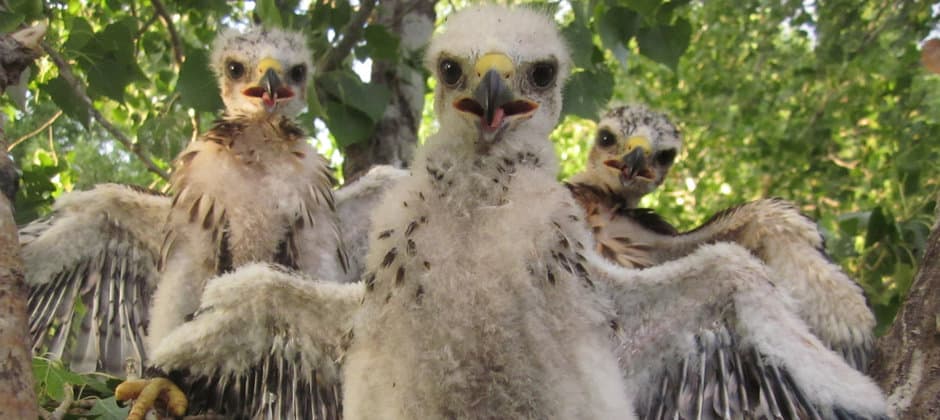Share this article
Wild Cam: Gray hawks benefit from waterway conservation
Riparian conservation in otherwise arid environments could help a raptor that was rarely found north of the Mexican border in previous decades to expand into the American Southwest.
New research shows how ecosystem management choices can affect the current and future success of species like the gray hawk (Buteo plagiatus), which is likely experiencing range shifts due to climate change.
Enlarge
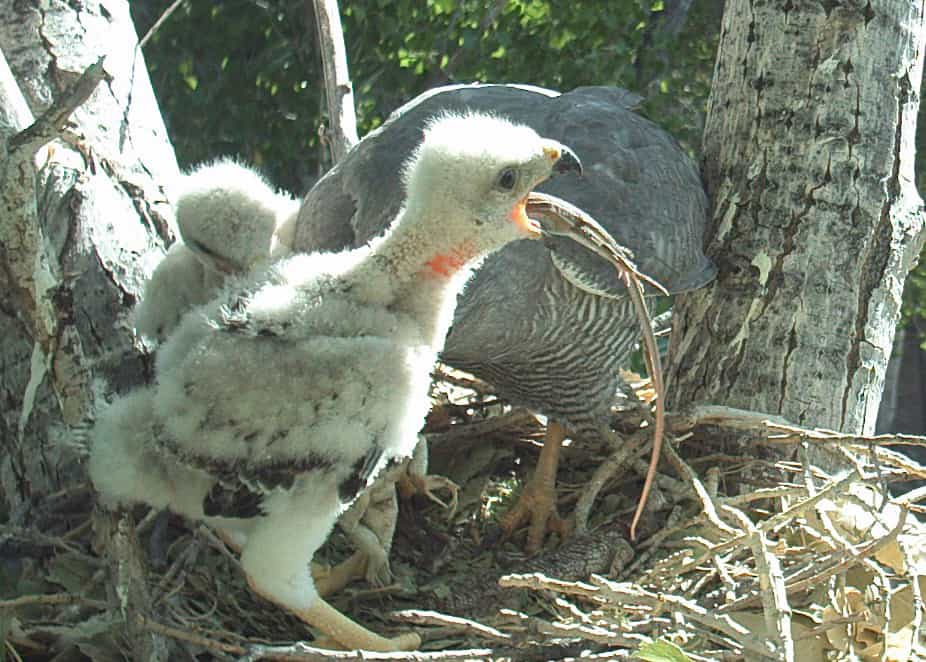
Ariana La Porte
Gray hawks mostly occupy parts of Mexico and Central America. Slightly larger than a Cooper’s hawk (Accipiter cooperii). these medium-sized hawks were first documented in the San Pedro River area of Arizona in 1973, and surveys in that area later revealed some nesting pairs of the birds, said Ariana La Porte, a PhD student at Monash University in Australia and the lead author of a study about the hawks published recently in the Journal of Wildlife Management.
The Arizona population continued to grow throughout the 1980s. In the first published study, conducted in the 1990s, researchers concluded that the hawks nested along the San Pedro River in cottonwood trees and foraged in mesquite bosque ecosystems defined by thorny, shrub-like trees. The study also found that they mostly fed on desert grassland whiptail lizards (Aspidoscelis uniparens). The gray hawk chick pictured here can’t quite swallow the lizard, since its throat is already full.
Enlarge
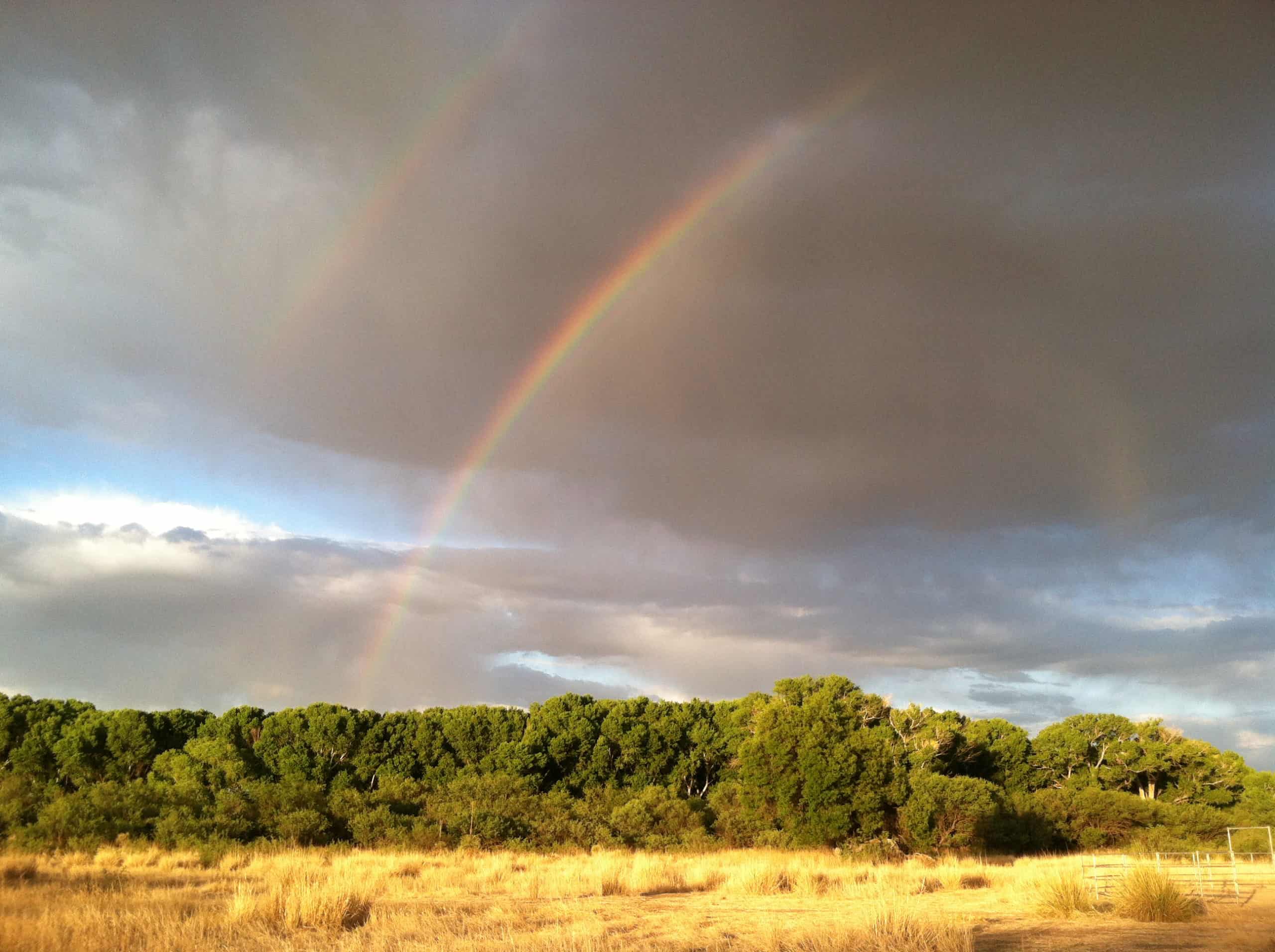
Ariana La Porte
The San Pedro River is one of the last undammed, undiverted rivers of the Southwest. The river flows northward from its origin in Mexico, past Tucson, Arizona, to its west, until it empties into the Gila River just southeast of Phoenix. In the midst of an otherwise arid region, the river provides “an amazing wildlife mecca” that has super high bird and animal diversity, La Porte said.
Enlarge
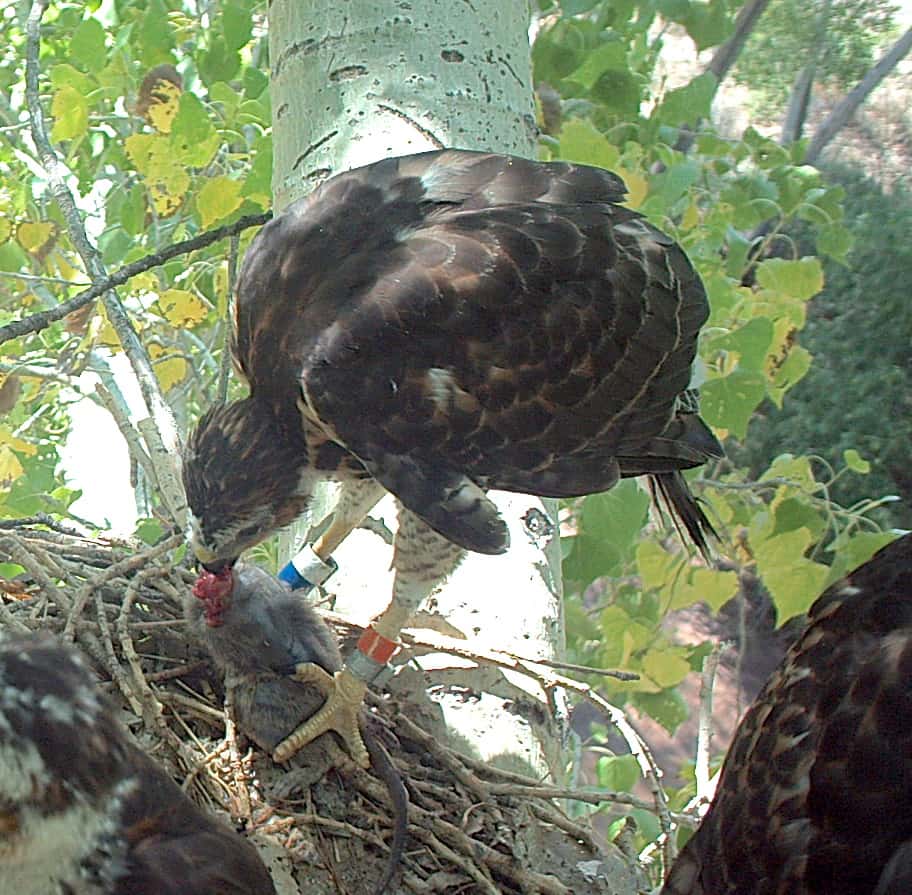
Ariana La Porte
She and her colleagues wanted to reassess the population in the area. They deployed motion-activated camera traps in nests and walked transects along the river in 2010-2011 and again in 2014-2016.
They found that the gray hawks had expanded the types of ecosystems they used for hunting compared to the findings of the earlier study in the 1990s. While previously, researchers believed the birds mostly fed on lizards, this research found they also fed on cotton rats (Sigmodon hispidus), often devoured head first as in this photo, and other small mammals.
Enlarge
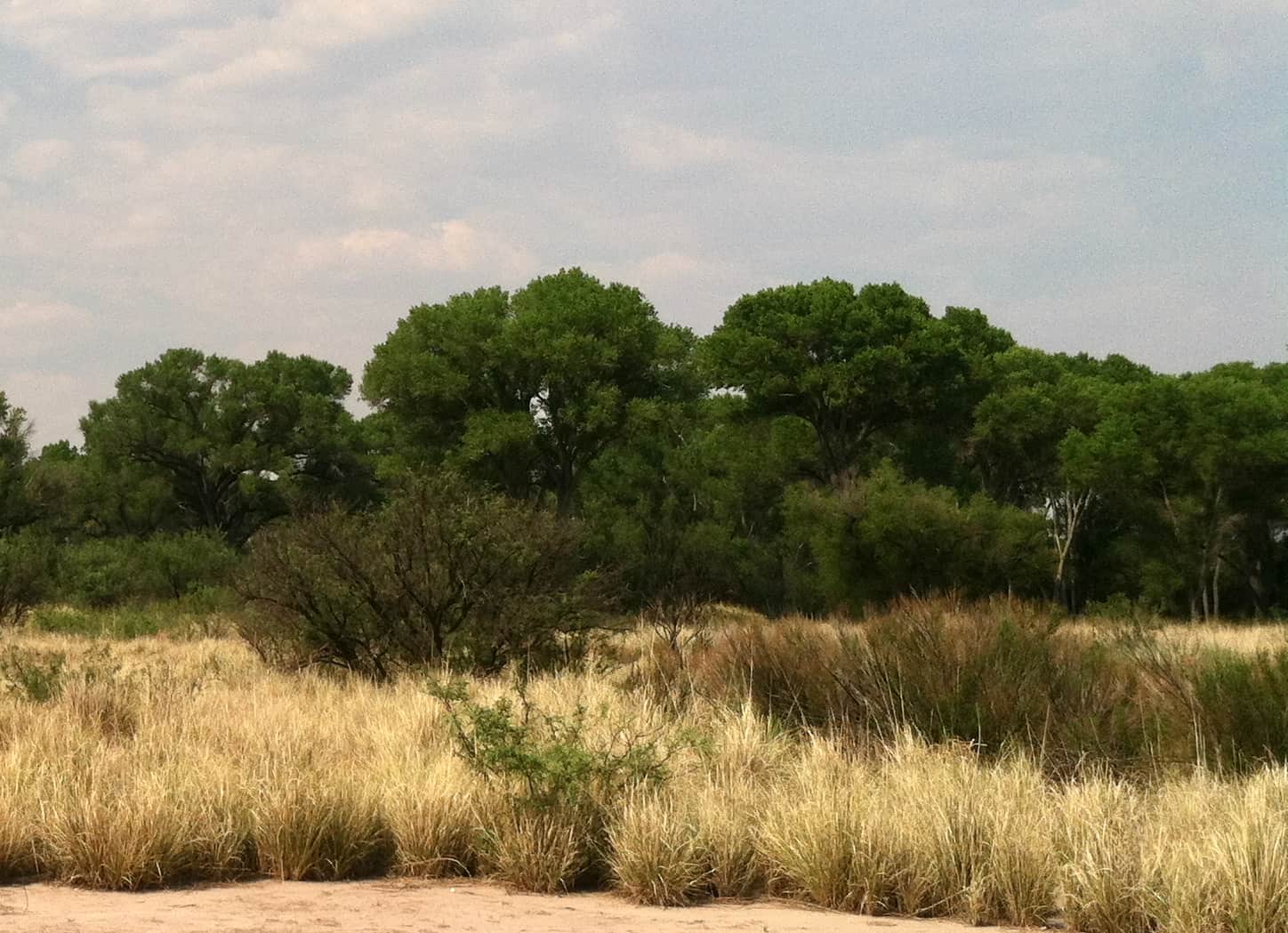
Ariana La Porte
La Porte said that this likely has to do with landscape changes that occurred in the past few decades. Cattle grazing stopped in the area in 1988, at which point the areas around the San Pedro began to change. Grass began to grow higher, which provides cover for small mammals.
Cotton rats are diurnal, just like the hawks, so they provide a good food source for the raptors.
“It took a while for those grasslands to come back and become habitat for the high quality prey,” La Porte said.
Enlarge

Ariana La Porte
Her team also found that the hawks ate other snakes, like this Sonoran whipsnake (Masticophis bilineatus), as well as bats, invertebrates, small mammals, toads, skunks, birds and even turtles, indicating their diet is more generalist than previous believed. Much about their project is detailed on their website, the Arizona Gray Hawk Project.
Enlarge
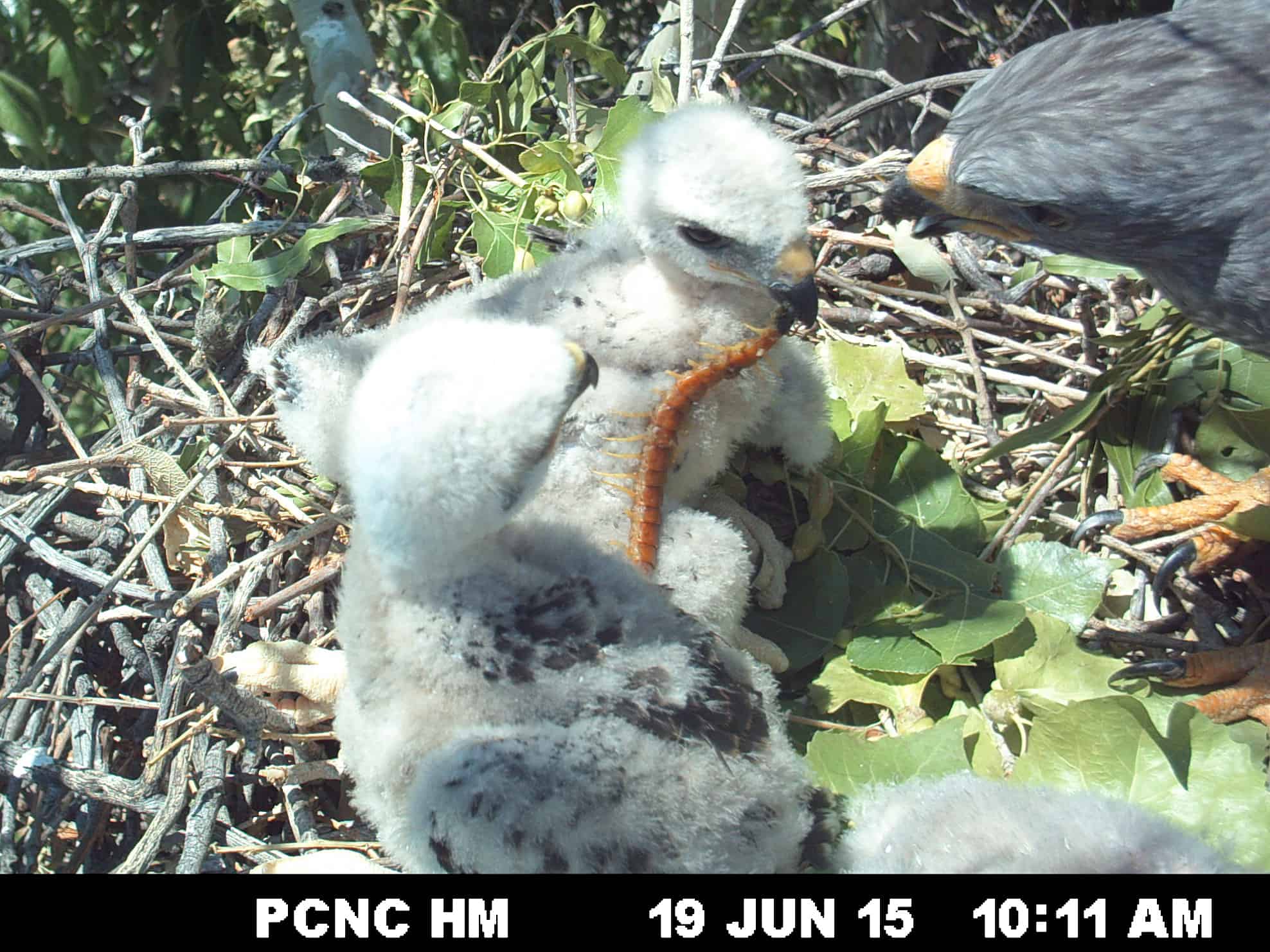
Ariana La Porte
In some ways, the discovery of a diverse diet, which even included centipedes, wasn’t a total surprise, she said. Researchers knew little about gray hawks, even south of the border. La Porte couldn’t find a single study on gray hawks other than the one conducted in the U.S. population in the 1990s.
The researchers also found hawks in mountainous regions near the San Pedro River up until November, when temperatures normally become cooler and the birds would have normally left.
“Because of these warmer temperatures, the prey is available for longer,” La Porte said.
Enlarge
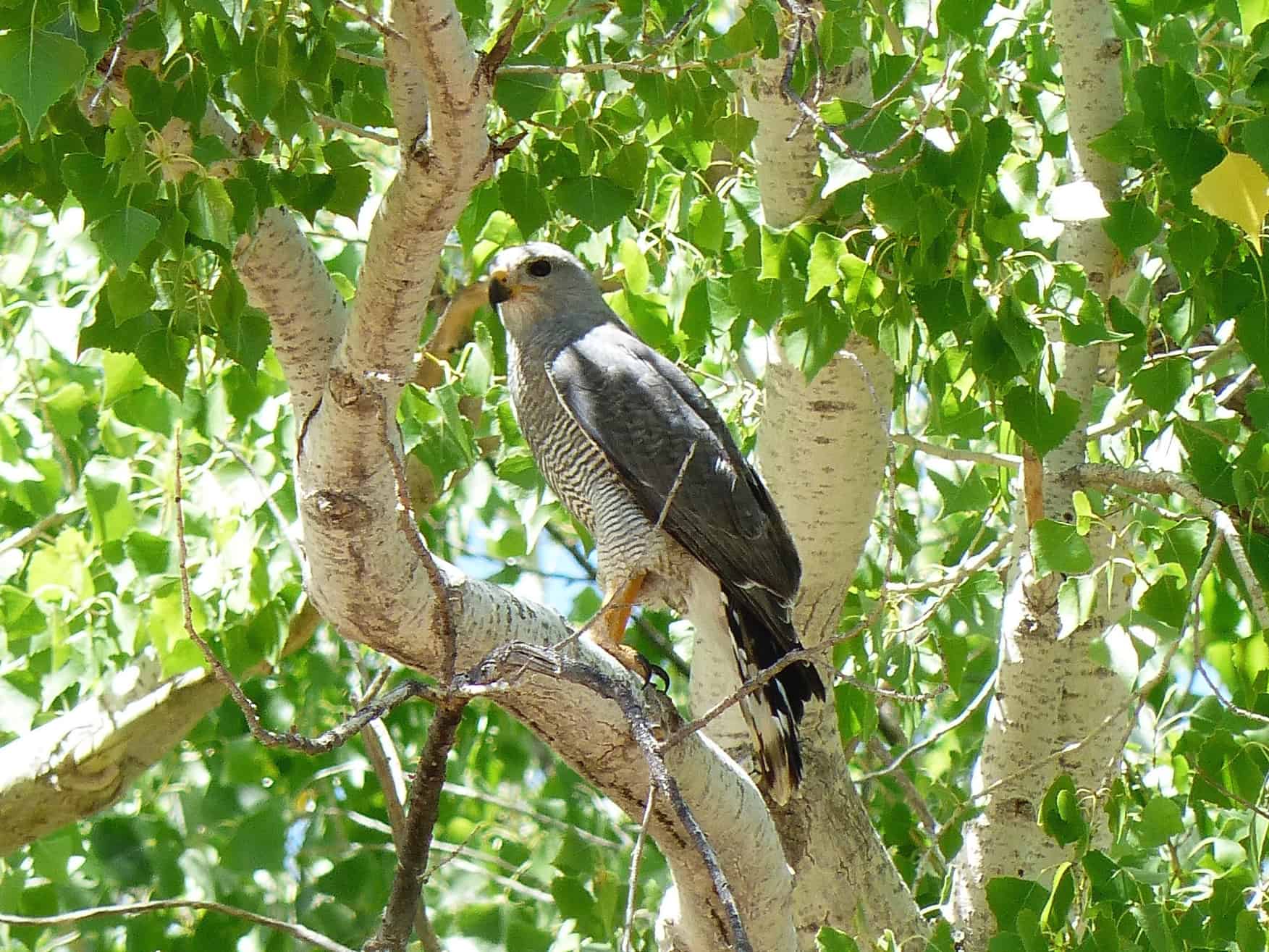
Ariana La Porte
In fact, the warmer climate may be another factor causing gray hawks to push north of their usual range in Mexico.
While their historical range isn’t clear, La Porte said, researchers believe the hawks were once common as far north as Tucson. While new habitat became available for the hawk after grazing stopped, La Porte worries it won’t last. The U.S. Bureau of Land Management recently opened up parts of the San Pedro Riparian National Conservation Area to grazing again, she said, which may drive out cotton rats and other gray hawk prey.
Growing human populations in the area also mean increasing amounts of water are withdrawn from the San Pedro. “If there’s no water, there’s no trees and no prey,” La Porte said.
This photo essay is part of an occasional series from The Wildlife Society featuring photos and video images of wildlife taken with camera traps and other equipment. Check out other entries in the series here. If you’re working on an interesting camera trap research project or one that has a series of good photos you’d like to share, email Joshua at jlearn@wildlife.org.
This article features research that was published in a TWS peer-reviewed journal. Individual online access to all TWS journal articles is a benefit of membership. Join TWS now to read the latest in wildlife research.
Header Image: Gray hawks mostly range across Mexico and Central America. ©Ariana La Porte



